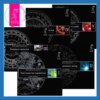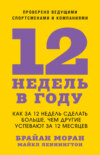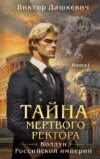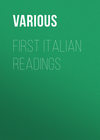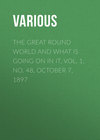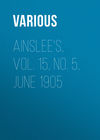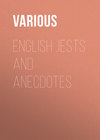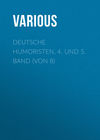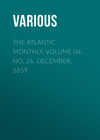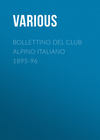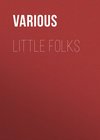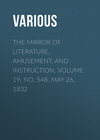Читать книгу: «Birds and All Nature, Vol. V, No. 4, April 1899», страница 3
INVITATION TO THE REDBREAST
Sweet bird, whom the winter constrains —
And seldom another it can —
To seek a retreat – while he reigns
In the well-shelter'd dwellings of man,
Who never can seem to intrude,
Though in all places equally free,
Come, oft as the season is rude,
Thou art sure to be welcome to me.
At sight of the first feeble ray,
That pierces the clouds of the east,
To inveigle thee every day
My windows shall show thee a feast.
For, taught by experience, I know
Thee mindful of benefit long;
And that, thankful for all I bestow,
Thou wilt pay me with many a song.
Then, soon as the swell of the buds
Bespeaks the renewal of spring,
Fly hence, if thou wilt, to the woods,
Or where it shall please thee to sing:
And shouldst thou, compell'd by a frost,
Come again to my window or door,
Doubt not an affectionate host,
Only pay, as thou pay'dst me before.
Thus music must needs be confest
To flow from a fountain above;
Else how should it work in the breast
Unchangeable friendship and love?
And who on the globe can be found,
Save your generation and ours,
That can be delighted by sound,
Or boasts any musical powers?
– Cowper.
FEATHERS
W. E. WATT
A splendid young blackbird built in a tree;
A spruce little fellow as ever could be;
His bill was so yellow, his feathers so black,
So long was his tail, and so glossy his back,
That good Mrs. B., who sat hatching her eggs,
And only just left them to stretch her poor legs,
And pick for a minute the worm she preferred,
Thought there never was seen such a beautiful bird.
– D. M. Mulock.
Oh! Nature's noblest gift – my gray-goose quill!
Slave of my thoughts, obedient to my will,
Torn from thy parent bird to form a pen,
The mighty instrument of little men!
– Byron.
FEATHERS have played an important part in the history of mankind. Henry of Navarre won the battle of Ivry after electrifying his men with the following words: "Fellow soldiers, you are Frenchmen; behold the enemy! If you lose sight of your ensigns, rally round my plume; you will always find it on the high road to honor!"
No doubt the templars carried the hearts of many with them in the crusades more effectually because their waving plumes gave them a picturesqueness which inspired brave men with courage and pious ones with holy zeal.
Savages delight in adorning themselves with feathers, and civilized women have found their charms enhanced by the placing of feathers against fair skins until the close of the nineteenth century finds a social struggle raging through fear that the demands of fashion may yet destroy from the face of the earth its sweetest songsters and its most beautifully plumed creatures.
Fans of feathers are admired the world over. In warm countries huge fans or screens made of beautiful feathers are often carried to shade royalty. In great processions the Pope is followed by bearers of magnificent fans of ostrich plumes. In the Sandwich Islands for a long time the enthroning of a new king was made gorgeous by his wearing a garment of many thousands of feathers; but recently, as if in preparation for a union with the United States, this state garment was buried with the king and the ceremony became simpler.
The noblest use to which feathers have been adapted has been in the production of writing instruments. The antiquity of the pen, regarded as a feather, is shown in the proof recently set forth by the philologists. Penna is the Latin for feather; farther back an instrument for flying is called patna; the Sanskrit which became penna in the Latin tongue became phathra in the mouths of the Teutonic peoples. So the English language, which is formed from both Latin and Teutonic elements, possesses two words, pen, and feather, which were one in their origin, have been widely separated during the ages, and now are united, but in such a way that only under the microscope of comparative grammar are we able to discover that they have the same blood in their veins.
Although the people living in warm countries wrote with the reed, the Chinese with a brush, and we have learned to fashion steel so it will do the work to better advantage, yet the feather has been a mighty agency in the civilization of the world.
Every teacher used to consider it one of the essentials of his equipment to possess a good penknife and know how to use it in making or mending pens for his pupils. Quills were first carefully cleansed from all oily or fatty matter and then dried. A gentle heat was applied to secure the brittleness which made it possible to split the pen point without spoiling the quill.
In Russia and in Holland quills were dipped in boiling alum-water or diluted nitric acid and then dried and clarified in a bath of hot sand. Goose quills were most used, turkey quills were prized by many, and swan quills were considered the best of all. Pens well made from swan quills often sold as high as four guineas a thousand, while goose quill pens were to be had at twenty shillings. For fine writing, crow-quills were considered best, and pen-and-ink drawings were generally produced with the black-plumed article.
In 1832, to supplement the domestic products in the manufacture of pens, 33,668,000 quills were imported into England. The trade has not been entirely killed by the advent of the steel pen, for there are yet among us representatives of the people of the olden time who delight in the pretty little squeak of the quill pen as it assists them in their literary labors.
Man early learned to rob the birds of their coverings, not only for adornment, but also for warmth. Feather beds were once reckoned as evidences of wealth. Modern science has pointed out the unhealthful condition of a bed made soft and gaseous with feathers. Few beds are now found of this sort among the better-informed people of America, but the traveler in the northern countries of Europe not only has to sleep on feathers but also under them. The down coverlet is as essential to a Danish bed as is clean linen.
The newest palace of the German emperor is furnished in accordance with the Teutonic idea, and the visitor to the palace at Strasburg, when his majesty is not there, is shown his royal bed room with its single bed and double featherings.
Downy feathers grow most abundantly on birds inhabiting cold regions. Many young birds have an abundance of downy feathers when first hatched. In some cases it is well formed before the egg is broken, firmly enclosed in a tight roll of membrane to keep it dry. On exposure to the air the membrane bursts and the down wraps the nestling in a comfortable coat.
The stronger feather sometimes grows out of the same place as the downy one in such a way that it pushes out the down to the outside of the plumage and the bird appears to have his underwear outside his overcoat.
The best eider-down is so light that three-quarters of an ounce of it will fill a large hat. It is so elastic that two or three pounds may be compressed into a ball that may be held in the hand.
Some feathers have a second shaft growing out of the end of the quill so as to form a double feather, and in rare instances there are two of these growths from one quill, making a triple feather.
Birds are warmer blooded than other animals. What is a dangerous fever temperature in the blood of man, is natural and ordinary in a bird. As birds fly rapidly, they could not live if they were perspiring creatures because they would lose heat so fast. Feathers protect them from the sudden changes of temperature and loss of heat and strength.
Feathers are important to the bird to fly with; but even for this purpose they are not absolutely necessary. There are forms of animals that fly, as the bat does, with their skin to beat the air. There were once on the earth many more skin-flying animals than there are to-day.
Feathers are modifications of the scarf-skin. Wherever the skin is exposed to sun, wind, or water it is modified in some way to contribute to the well-being of the animal. The many forms of feathers make a most fascinating study.
A peculiar thing about them is that they are not vascular. Vascular means full of vessels. Almost everything that grows is vascular. It has tubes to carry in new material and little sacs or large ones to store substance for new growths. But dermal appendages, the forms that grow out of the scarf-skin and are modifications of it, are not vascular. Take a feather two feet long, and examine it to see how the feather material was carried from the beginning of the quill to the tip. You find no veins and no circulation. Yet feathers grow and their growth is quite mysterious and not understood by the wisest people.
The material of a feather consists of cells that push each other out to their destination. They change their forms as they travel along, and their colors and degrees of hardness change with their going. They are composed of about the same stuff that makes horns and hoofs. Your finger nail is like a feather in its growth and composition. It is mostly albumen with some lime in it. Albumen is the substance which makes the white of eggs.
When the Mexican motmot trims his two tail feathers with his beak, he merely makes diamond cut diamond. The material of the cutting instrument is the same as that of the thing cut, only somewhat harder.
When you consider how a feather grows by pushing out its cells you must wonder at the intelligence which guides the cells to change their nature so as to form the quill, the shaft, the after-shaft, the barb, the barbules, and the little hooks which hold them together. More than this is the cause for admiration seen in the regular change of pigment contained in the cells, so the feather shall have its beautiful colors and accurate markings.
Along with the materials of the feather is carried a little oil which turns the water from the duck's back and gives the feather its gloss. It is thought by some that the fading of feathers in museums where mounted specimens are exposed to the action of light is largely due to the loss of this delicate oil. No enterprising Yankee has come forward yet with a patent for restoring this oil and giving back to the thousands of musty and dusty skins in our museums their original brilliancy.
Every one wonders at the way feathers keep their shape instead of getting hopelessly ruffled. The little hooks which hold the barbules together are exceedingly strong and flexible. They will yield and bend, but never break. Even when torn apart from their hold they can grasp again so as to restore the injured feather to its former shape.
VISION AND SCENT OF VULTURES
REV. R. T. NICHOL
To the Editor of Birds and All Nature:
Sir: Are you not mistaken in the assertion in your October number that vultures, carrion-crows, etc., have such keen scent that they can detect carcasses and offal at a very great distance?
I was under the impression that Wilson 1 had decided this forever, and proved conclusively that their apparently miraculous power of discovering their proper food, was due to keenness of vision, and not of the sense of smell.
The following extracts may be new to some and interesting to all of your readers: Under the head "Vultur aura, Turkey Vulture," etc., I find:
"Observations on the supposed power which vultures such as the turkey vulture, are said to possess of scenting carrion at a great distance.
"It has always appeared to us unaccountable that birds of prey, as vultures, could scent carcasses at such immense distances, as they are said to do. We were led to call in question the accuracy of this opinion, on recollecting the observations of some travelers, who have remarked birds of prey directing their course towards dead animals floating in the rivers in India, where the wind blows steadily from one point of the compass for months in succession. It was not easy to conceive that the effluvium from a putrid carcass in the water, could proceed in direct opposition to the current of air, and affect the olfactory nerves of birds at so many miles distant. We were disposed to believe that these birds were directed towards the carrion rather by the sense of seeing than by that of smelling. This opinion is confirmed by the following observations of our friend Audubon, communicated to us by him some time ago for our Philosophical Journal."
Here follows at length Audubon's communication, from which I extract the following passages:
"My First Experiment was as follows: I procured a skin of our common deer, entire to the hoofs, and stuffed it carefully with dried grass until filled rather above the natural size, – suffered the whole to become perfectly dry and as hard as leather – took it to the middle of a large open field, and laid it down upon its back with the legs up and apart, as if the animal were dead and putrid. I then retired about a few hundred yards, and in the lapse of some minutes a vulture coursing around the field, tolerably high, espied the skin, sailed directly towards it, and alighted within a few yards of it. I ran immediately, covered by a large tree, until within about forty yards, and from that place could spy the bird with ease. He approached the skin, looked at it without apparent suspicion, raised his tail and voided itself freely (as you well know all birds of prey in a wild state generally do before feeding), then approaching the eyes, that were here solid globes of hard, dried, and painted clay, attacked first one and then the other, with, however, no farther advantage than that of disarranging them. This part was abandoned; the bird walked to the other extremity of the pretended animal, and there, with much exertion, tore the stitches apart, until much fodder and hay were pulled out; but no flesh could the bird find or smell; he was intent on finding some where none existed, and, after reiterated efforts, all useless, he took flight, coursed round the field, when, suddenly turning and falling, I saw him kill a small garter snake and swallow it in an instant. The vulture rose again, sailed about, and passed several times quite low over the stuffed deer-skin, as if loth to abandon so good-looking a prey.
"Judge of my feelings when I plainly saw that the vulture, which could not discover through its extraordinary sense of smell that no flesh, either fresh or putrid, existed about that skin, could at a glance see a snake scarcely as large as a man's finger, alive, and destitute of odor, hundreds of yards distant. I concluded that, at all events, his ocular powers were much better than his sense of smell.
"Second Experiment.– I had a large dead hog hauled some distance from the house and put into a ravine, about twenty feet deeper than the surface of the earth around it, narrow and winding much, filled with briars and high cane. In this I made the negroes conceal the hog, by binding cane over it, until I thought it would puzzle either buzzards, carrion-crows, or any other birds to see it, and left it for two days. This was early in the month of July, when, in this latitude, a body becomes putrid and extremely fetid in a short time. I saw from time to time many vultures, in search of food, sail over the field and ravine in all directions, but none discovered the carcass, although during this time several dogs had visited it and fed plentifully on it. I tried to go near it, but the smell was so insufferable when within thirty yards of it that I abandoned it, and the remnants were entirely destroyed at last through natural decay.
"I then took a young pig, put a knife through its neck, and made it bleed on the earth and grass about the same, and, having covered it closely with leaves, also watched the result. The vultures saw the fresh blood, alighted about it, followed it down into the ravine, discovered by the blood of the pig, and devoured it, when yet quite fresh, within my sight."
He pursues the subject at some length, recounting other experiments; but these, were they not even given on the authority of Audubon —clarum et venerabile nomen– seem to me to be conclusive.
22 Irving place, New York




